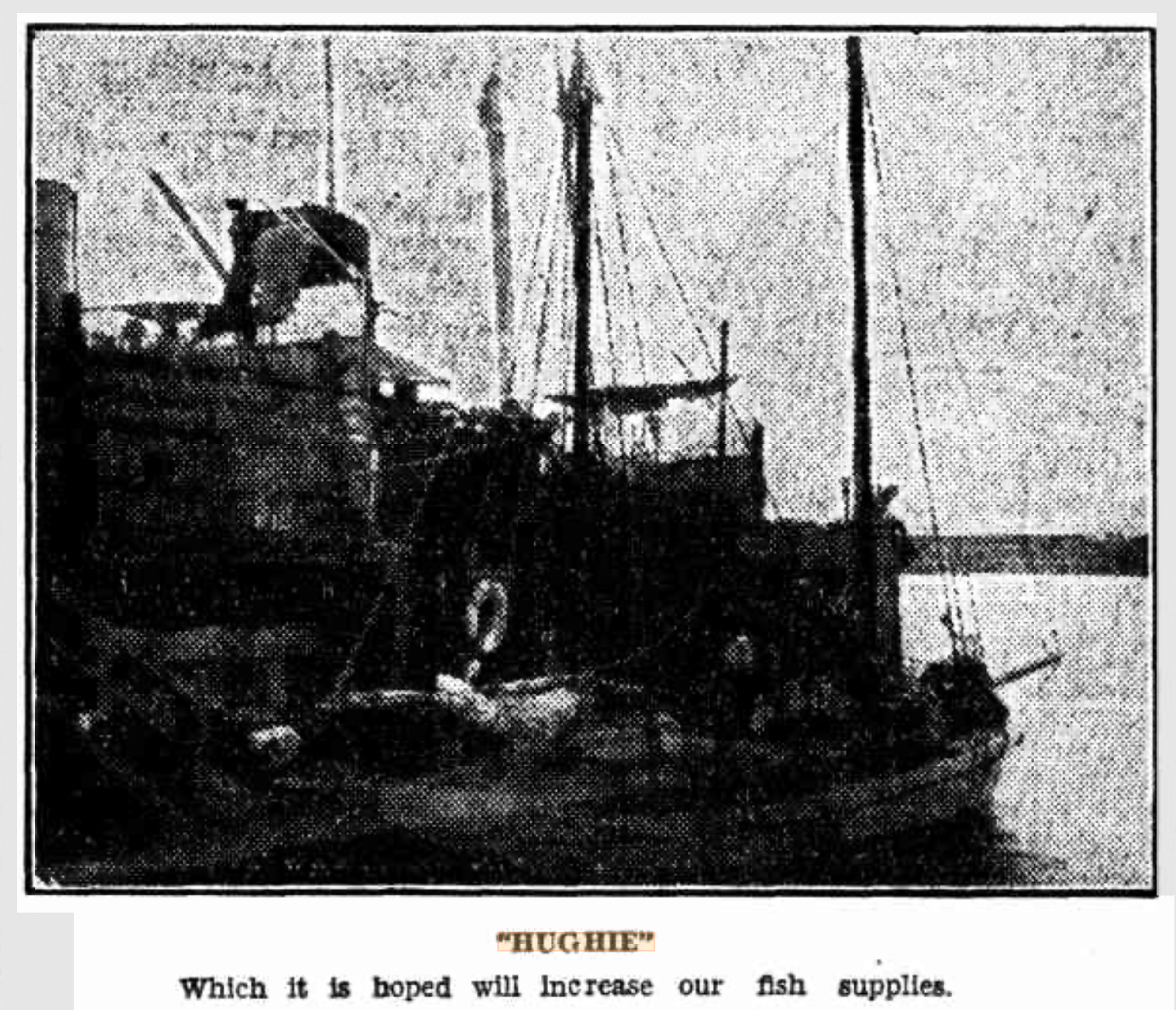Axell and Saarenpaa
Vessel Name: Hughie
Gustav Pontus Axell
Jalmar Saarenpaa
Drowned at Sea; Bodies recovered
7 September 1931

Gustav Axell left a healthy financial estate

The Hughie
The Hughie was a 40 foot pearling lugger, which had been brought to Fremantle from Broome by Captain Leslie William Claxton in January 1931.
The craft was then fitted out at Petterson’s slip, Victoria Quay for deep-sea fishing. A 15 horsepower engine had been installed, and an ice-box capable of carrying two tons had been made. There was ample accommodation for a crew of four and nets and lines were to be used for catching fish.
The Hughie left Fremantle on the 21 August 1931 with four crew onboard for the Jurien Bay fishing grounds. They were:
- Gustav Pontus Axell, 41 years of age, single and residing with J. B. O’Sullivan at 56 Beaufort Street in Perth.
- Frank Payton, 39 years of age, single, of 32 Queen Street in Fremantle.
- Jalmar Saarenpaa, 32 years of age, single, of 51 Cantonment Street in Fremantle.
- Axel William Klingberg, 24 years of age, single, of 149 Ellen Street in Fremantle.
On Monday 7 September, they were returning from a fishing expedition at Jurien Bay. They took shelter about a quarter of a mile from Lancelin island, 66 miles North of Fremantle, and about 300 yards from the shore.
At 7pm Axell, Saarenpaa and Klingberg went ashore in a dinghy to cast a net to catch some small fish. At around 9:30pm, having caught only a few fish, the three men decided to return to the Hughie as a shower of rain was approaching. Saarenpaa was working the oars and was making a fast pace. Klingberg asked him to row more slowly as a heavy sea was rolling.
When they had reached about half the distance to the Hughie, a large wave swamped the dinghy and it sank.
Klingberg originally searched for the other two men but could not find them, and he swam ashore. The next morning he decided to swim back to the Hughie and was helped aboard by Payton, with the use of a board with a line attached. Payton and Klingberg made a makeshift raft of buoyant material at their disposal, but the heavy weather prevented them using it.
The next day they utilised empty petrol tins to keep the raft afloat and the men were able to reach the shore, when an intensive search for miles of coastline was carried out. No trace of the missing men was found.
At the time it was thought the bodies might have become buried underneath the thickly matted seaweed which abounds that part of the coast. A very heavy northerly current was also flowing at the time.
The men decided to return to Fremantle to report the news and reached Port at 3pm on Saturday 12 September. Arrangements were made for the Fisheries Department launch to search the coast near the mouth of the Moore River.
Onboard were Inspector Brown, Constable Wrigley and Gustav Adolf Axell, the uncle of Gustav Pontus Axell. The bodies were recovered on 17 September on the beach beyond Jurien Bay, by Constable Clifford of Gingin.
Other reports suggested the bodies were found opposite the spot where the dinghy disappeared.
Constable Clifford initially buried the two men in the sand, but later the bodies were bought to Fremantle by the motor launch. The search party had to exhume the bodies and carry them three miles before it was possible to ship them on the launch.
On the 28 September in the Fremantle Courthouse, the acting-Coroner Mr. G. Shepherd, J.P returned a verdict of accidental death.
Gustav Pontus Axell had just returned from a trip around the world. He was born in Sweden and had resided in Western Australia for 21 years. He left behind a decent estate to the value of 791 Pounds, which included a Life Policy with City Mutual Life Association worth 500 Pounds and 275 Pounds in the Bank. His Father, Frans Patrick Axell remained in Sweden and appointed his brother, Gustaf Adolf Axell of Boulder to administer the Estate.
Jalmar Saarenpaa was born in Finland, but not much is known of his life. It is doubtful whether he left behind any family in Australia at the time of his death. Axel William Klingberg was also from Finland.
Frank Payton had a colour life. His true name was Dave Libman. He ran away from his Jewish family in Riga, Latvia at just 13 years of age and reached Australia as a sailor and worked as a fisherman. Enlisting in the AIF, he served in the 10th Battalion on the Western Front where he was wounded three times; first in July 1916 at Pozieres in his face and left hand, then in September 1917 in the arm, and in May 1918 at Ville-sur-Ancre, with a gunshot wound fracturing his leg and leaving him lame and semi-crippled.
After the war he worked in Western Australia as a Wharfie, a Whaler, a Fisherman and a Prospector.
He was evacuated from Darwin in 1942 to South Australia, where he ran into some difficulties over his nationality and observed: “I have never been subject to such indignities as I have suffered here since it had been discovered that I am apparently not a British subject and I want to be naturalized as soon as possible.” He was naturalised in 1945.
Payton had previously survived the wrecking of the fishing ketch the Shark in 1927, near Lancelin Island, with the assistance of the crew of the Silvery Wave. At the time Axell was in the process of purchasing the Shark from the Government.
